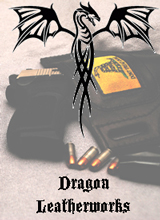I got thinking about this. It seems of all the .45 Handguns out there the M1911 is hands down the slimmest. Now its not like single-stack .45s are rare beasts, and its not like they’re using odd alloys for the slides. Sure the frames are being made of aluminum, polymer, and various other magical alloys, but unless we’re talking about the few Zamak gun makers, the top side are made of Stainless or carbon steel, and that stuff has ONLY gotten better since 1908 when the first M1911 sides were machined in Utah.
The only thing I can think of is that the machining of the twin locking lugs on the barrel, and the locking point in the slide takes time and fitting to work, so most semi-autos these days (also does anybody know who first did this?) put a massive lug on top of the chamber and has it mate up with the ejection port.
Does this locking method necessitate a wider slide?
Just curious.



Pretty much. You still need the same locking surface area between the barrel and slide to carry the load. Browning’s scalloped barrel lockup stacks these lengthwise down the barrel (although the further down the barrel you go the less engagement you get). More modern designs use the single lug at the ejection port because it’s cheaper and easier. Since you can’t change the laws of physics, that single lug has to be the same size as the engagement surfaces on the two smaller JMB style lugs. You could try to make the lug taller, but the you run into engagement and disengagement issues again if it gets too tall so generally the single lug has to get wider.
COOL thanks! That makes perfect sense!
You’re welcome. Nice to know those mechanical engineering degrees were worth something.
Not necessarily.
all things being equal, you’d need the same area for the locking lugs. That area can be any shape. Moving from double to single lug, the single lug would need to be twice the size. However for a gross example, you could have one lug on a barrel, but the barrel has twice the vertical travel of a two lug barrel.
As things get unequal – better steel alloys and heat treatment for example, less area would be required for the same strength.
But then again, there’s always a safety margin in the design. It’s tough to compare the margins (and ultimate strengths) on varied designs. Is a G21 wider than a 1908? Probably. Would a G21 enjoy a steady diet of +P? Probably. Would you have +P in the same room as a 1908? Most likely not 🙂
Having done the math on only one firearm, I found the USGI design wasn’t particularly robust and the safety margin of standard USGI ammo was amazingly slim.
SIG was the first one to use the ejection port as the bearing surface for the chamber hood/locking lug on the P220.
You will often find this referred to as “modified Browning” or “SIG-Browning” short-recoil.
It saves manufacturing steps in that you don’t have to turn separate lugs on the barrel and corresponding mortises in the slide.
Cool, I’ve been looking for that info for a while now. I knew the p210 had a short-recoil locking system that closely resembled the Browning Hi-Power system, and the p220 has the big ejection port lug like most modern pistols. I just didn’t know the 220 was the first.
Thanks!